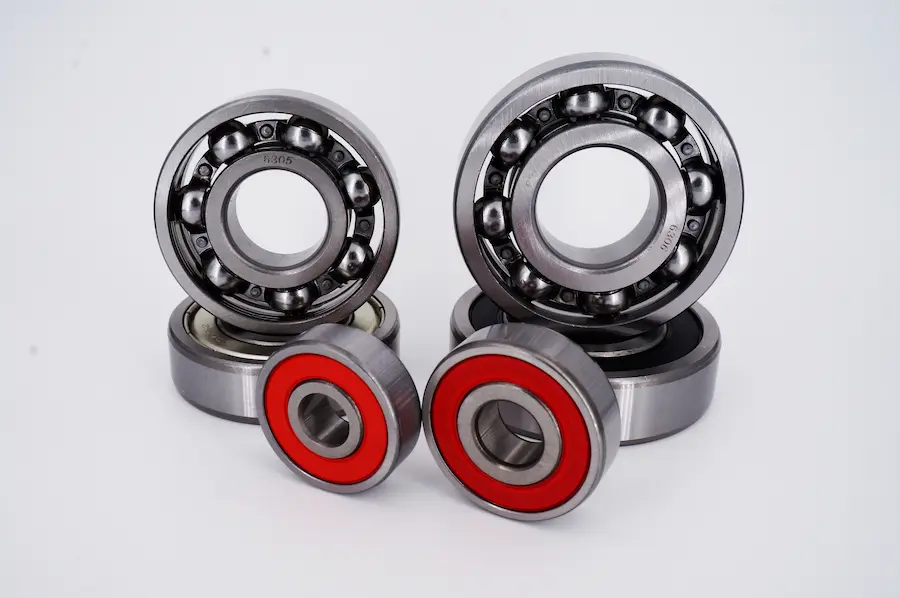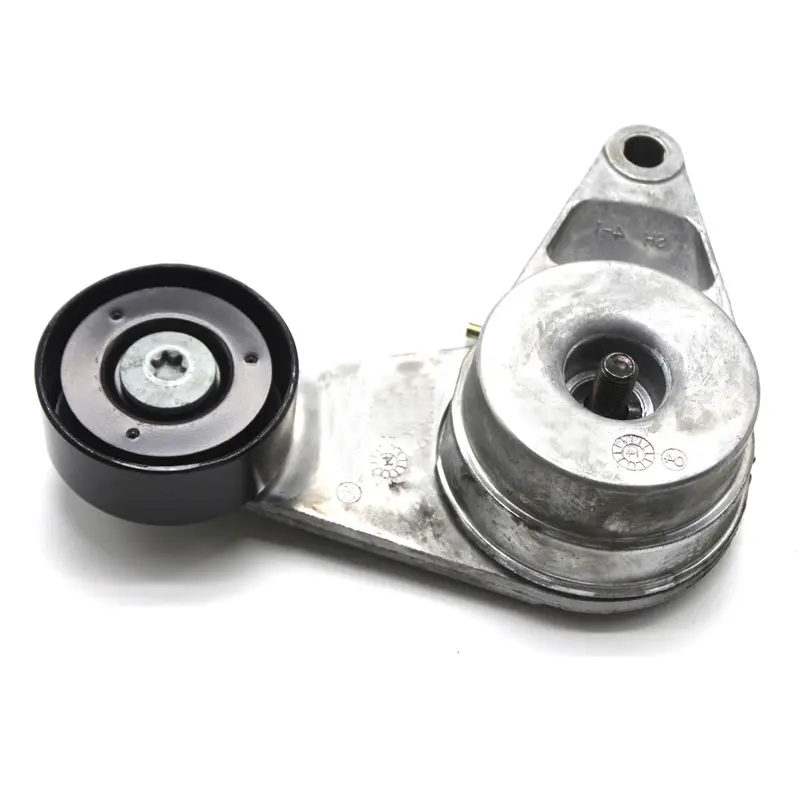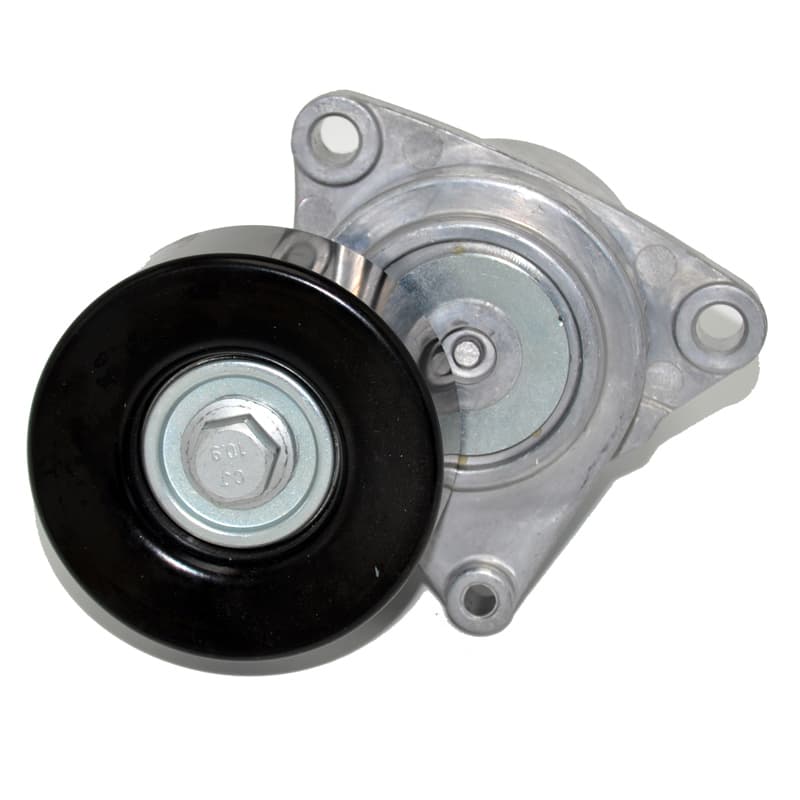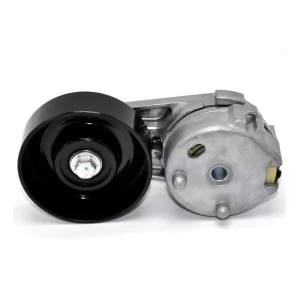В сфере автомобильного и промышленного оборудования бесперебойная и эффективная работа двигателей, систем с ременным приводом и различных механических узлов имеет первостепенное значение. Центральное место в этих системах занимают компоненты, известные как подшипники натяжителя и ведомого ролика. Эти подшипники, хотя им часто не уделяют должного внимания, играют важнейшую роль в обеспечении надлежащего функционирования систем с ременным приводом, поддерживая правильное натяжение, направляя ремень и уменьшая трение. В этой статье мы рассмотрим преимущества подшипников натяжителя и ведомого ролика, подчеркнем их важность для повышения надежности, производительности и долговечности оборудования.
1. Обеспечение оптимального натяжения ремня
Одной из основных функций натяжителя и натяжного подшипника является поддержание правильного натяжения в системе с ременным приводом. Ремни, будь то в автомобильных двигателях или промышленном оборудовании, отвечают за передачу энергии между различными компонентами, такими как коленчатый вал, генератор и компрессор кондиционера. Однако со временем ремни могут растягиваться из-за износа, перепадов температуры и изменения нагрузки. Это растяжение может привести к потере натяжения, что влечет за собой проскальзывание, снижение эффективности и даже выход ремня из строя.
Подшипники натяжителя предназначены для автоматической регулировки и поддержания оптимального натяжения ремня, компенсируя его растяжение. Эта саморегулирующаяся функция гарантирует, что ремень остается натянутым и выровненным, предотвращая проскальзывание и обеспечивая эффективную передачу мощности. Поддерживая правильное натяжение, подшипники натяжителя помогают уменьшить износ ремня и других компонентов, продлевая их срок службы и сводя к минимуму необходимость в частом техническом обслуживании.
2. Уменьшение трения и износа
Подшипники обоих натяжителей играют важную роль в снижении трения в системах с ременным приводом. Трение является существенным фактором износа механических компонентов. В системах с ременным приводом трение между ремнем и шкивами может привести к перегреву, повышенному потреблению энергии и преждевременному износу как ремня, так и шкивов.
Подшипники, установленные на ведомых шкивах, служат направляющими для ремня, обеспечивая его правильную траекторию и контакт с ведущим и ведомым шкивами. Эти подшипники предназначены для минимизации трения, обеспечивая гладкую поверхность с низким сопротивлением, по которой движется ремень. Такое снижение трения не только повышает эффективность системы, но и уменьшает выделение тепла, которое может быть губительным как для ремня, так и для окружающих компонентов.
Подшипники натяжителя, поддерживая правильное натяжение, также способствуют снижению трения. Правильно натянутый ремень работает плавно и стабильно, минимизируя силу контакта между ремнем и шкивами. Это снижает общее трение в системе, что приводит к меньшему износу компонентов, увеличению срока службы ремня и улучшению общей производительности.
3. Повышение надежности системы
Надежность - важнейший фактор любой механической системы, будь то автомобиль, промышленное оборудование или тяжелая техника. Выход из строя одного компонента может привести к дорогостоящему простою, дорогостоящему ремонту, а в некоторых случаях и к катастрофическому повреждению всей системы. Подшипники натяжителя и ведомого ролика играют решающую роль в повышении надежности систем с ременным приводом.
Поддерживая правильное натяжение и снижая трение, эти подшипники помогают предотвратить проскальзывание, перекос и преждевременный износ ремня. Это обеспечивает плавную и эффективную работу системы с ременным приводом, снижая вероятность непредвиденных сбоев. Кроме того, подшипники натяжителя и ведомого ролика обычно рассчитаны на жесткие условия эксплуатации, такие как высокие температуры, большие нагрузки и воздействие загрязняющих веществ, таких как пыль и влага. Их долговечность и износостойкость делают их надежным выбором для различных областей применения, от автомобильных двигателей до промышленных конвейерных систем.
Помимо предотвращения выхода из строя ремня, подшипники натяжителя и ролика также способствуют долговечности других компонентов системы. Например, в автомобильном двигателе хорошо работающий подшипник натяжителя обеспечивает правильное выравнивание и натяжение ремня ГРМ или змеевикового ремня, предотвращая чрезмерный износ шкивов, генератора, водяного насоса и других комплектующих. Это не только продлевает срок службы этих компонентов, но и снижает риск дорогостоящего ремонта и обслуживания.
4. Повышение эффективности и производительности
Эффективность является ключевым фактором в любой механической системе, особенно в тех отраслях, где энергопотребление и эксплуатационные расходы являются критическими факторами. Подшипники натяжных и натяжно-вентильных устройств способствуют повышению эффективности и производительности несколькими способами.
Во-первых, поддерживая оптимальное натяжение ремня, подшипники натяжителя обеспечивают пиковую эффективность работы системы с ременным приводом. Правильно натянутый ремень более эффективно передает мощность, снижая потери энергии из-за проскальзывания или несоосности. Это приводит к повышению эффективности использования топлива в автомобилях и снижению энергопотребления в промышленности.
Во-вторых, снижение трения, достигаемое подшипниками натяжителя и ведомого ролика, повышает общую производительность системы. При меньшем трении система требует меньшей мощности для работы, что приводит к более плавной работе и снижению нагрузки на двигатель или мотор. Это может привести к лучшему ускорению, улучшенной отзывчивости и более тихой работе в автомобильных системах, а в промышленных условиях - к повышению производительности и снижению эксплуатационных расходов.
Наконец, подшипники натяжителя и ведомого ролика способствуют более стабильной и надежной работе с течением времени. Предотвращая такие проблемы, как проскальзывание и смещение ремня, эти подшипники помогают поддерживать оптимальное функционирование системы, обеспечивая ее наилучшую работу на протяжении всего срока службы. Такое постоянство характеристик особенно важно в тех областях применения, где точность и надежность имеют решающее значение, например, в производственных процессах или высокопроизводительных двигателях.
5. Упрощение обслуживания и сокращение времени простоя
Техническое обслуживание является неизбежной частью эксплуатации любой механической системы, но минимизация частоты и сложности задач по обслуживанию может значительно сократить время простоя и сопутствующие расходы. Подшипники натяжителя и натяжного ролика разработаны для упрощения обслуживания и увеличения интервалов между сервисными работами.
Одним из ключевых преимуществ подшипников натяжителя является их способность автоматически регулировать натяжение ремня по мере необходимости. Эта саморегулирующаяся функция устраняет необходимость в ручной регулировке натяжения, сокращая время и усилия, необходимые для технического обслуживания. Во многих случаях подшипник натяжителя рассчитан на весь срок службы ремня, то есть его необходимо проверять или заменять только тогда, когда ремень подлежит замене.
Подшипники холостого хода, хотя и не являются саморегулирующимися, обычно рассчитаны на длительный срок службы и простую замену. Их роль в направлении ремня и снижении трения означает, что они подвергаются относительно низкому износу по сравнению с другими компонентами. При необходимости замены подшипники часто легко доступны для замены, что сводит к минимуму время простоя и затраты на обслуживание.
Кроме того, долговечность и надежность подшипников натяжителя и ведомого ролика снижают вероятность неожиданных отказов, которые могут привести к дорогостоящим незапланированным простоям. Обеспечивая бесперебойную и эффективную работу системы с ременным приводом, эти подшипники способствуют более предсказуемому и управляемому графику технического обслуживания.
6. Универсальность и широкий спектр применения
Подшипники натяжителя и натяжного ролика - это очень универсальные компоненты, используемые в самых разных областях применения, от автомобильных двигателей до промышленного оборудования и т.д. Их способность поддерживать правильное натяжение ремня, снижать трение и повышать надежность делает их подходящими для различных типов систем с ременным приводом.
В автомобильной промышленности подшипники натяжителя обычно используются в системах змеевикового ремня, ремня ГРМ и привода дополнительного оборудования. Эти системы обеспечивают питание таких важных компонентов, как генератор, водяной насос, насос гидроусилителя руля и компрессор кондиционера. Надежность и эффективность этих систем важны для общей производительности и безопасности автомобиля.
В промышленности подшипники натяжителей и роликов используются в конвейерных системах, упаковочном оборудовании, печатных машинах и другом оборудовании, работающем на основе ременного привода. Их способность выдерживать жесткие условия эксплуатации, такие как высокие температуры, большие нагрузки и воздействие загрязняющих веществ, делает их идеальным выбором для сложных промышленных применений.
Кроме того, подшипники натяжителей выпускаются в различных вариантах исполнения и из различных материалов, что позволяет адаптировать их к конкретным условиям применения. Например, некоторые подшипники натяжителя оснащены демпфирующими механизмами для снижения вибраций, а другие разработаны из высокотемпературных материалов для использования в экстремальных условиях. Благодаря такой универсальности подшипники натяжителей и роликов могут удовлетворять уникальным требованиям различных отраслей промышленности и областей применения.
Заключение
Подшипники натяжителя могут быть небольшими компонентами, но их влияние на производительность, надежность и эффективность систем с ременным приводом очень велико. Поддерживая правильное натяжение ремня, снижая трение, повышая надежность и упрощая обслуживание, эти подшипники играют важнейшую роль в обеспечении бесперебойной работы автомобильных двигателей, промышленного оборудования и других механических систем. Их универсальность и способность работать в сложных условиях делают их незаменимыми в самых разных областях применения. По мере развития технологий подшипники натяжителей и роликов будут оставаться важнейшими компонентами, способствующими дальнейшему развитию и успеху различных отраслей промышленности.




